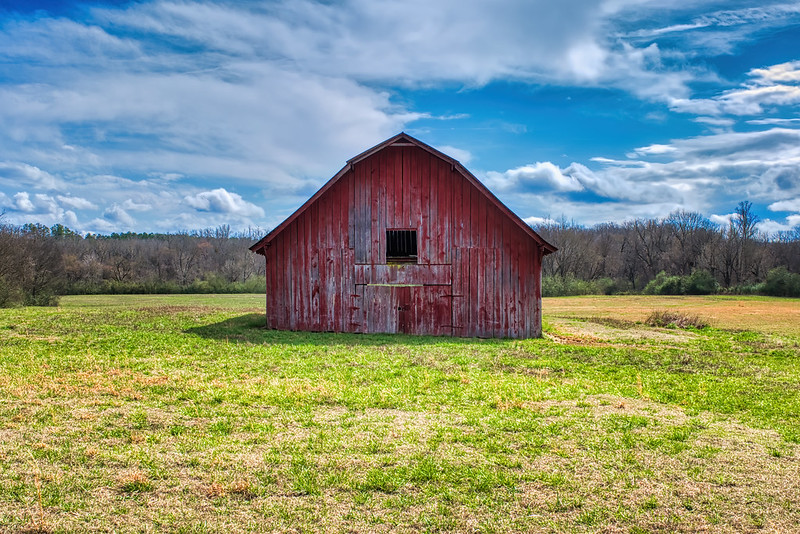I came across this red barn while driving on Highway 27 northbound in Mount Ida, Arkansas. Surrounded by rolling hills and patches of open farmland, it stood against a backdrop of leafless trees and a bright winter sky. Its weathered look stood out, making me realize that red barns aren’t as common as they once were.
Many old barns were painted red for practical reasons rather than just appearance.

Why Were Barns Painted Red?
The choice of red paint wasn’t just for looks—it served a purpose. Here’s why:
Cost-Effective Protection
Before modern paint became widely available in the 19th century, farmers had to use what was accessible. Linseed oil, derived from flaxseeds, was a common wood sealant, though it had an orange tint. To enhance its durability and protect against rot and mold, farmers often mixed in iron oxide—essentially rust—which was abundant and inexpensive. This combination turned the mixture a deep red, making it the most affordable and practical choice.
Natural Preservation
Iron oxide did more than just color the barn—it acted as a natural fungicide, preventing moss and fungi from growing on the wood. This extended the lifespan of the barn and reduced maintenance costs for farmers.
Tradition and Recognition
Over time, red barns became a recognizable symbol of rural life. Generations of farmers continued using the color, reinforcing its presence across the countryside. Even today, while barns come in various colors, the classic red remains popular for its nostalgic appeal, high visibility, and cost-effectiveness.
A Practical Legacy
Red barns might seem like a simple design choice, but their history is deeply rooted in resourcefulness, durability, and tradition. What started as a practical solution evolved into an enduring symbol of rural America.
